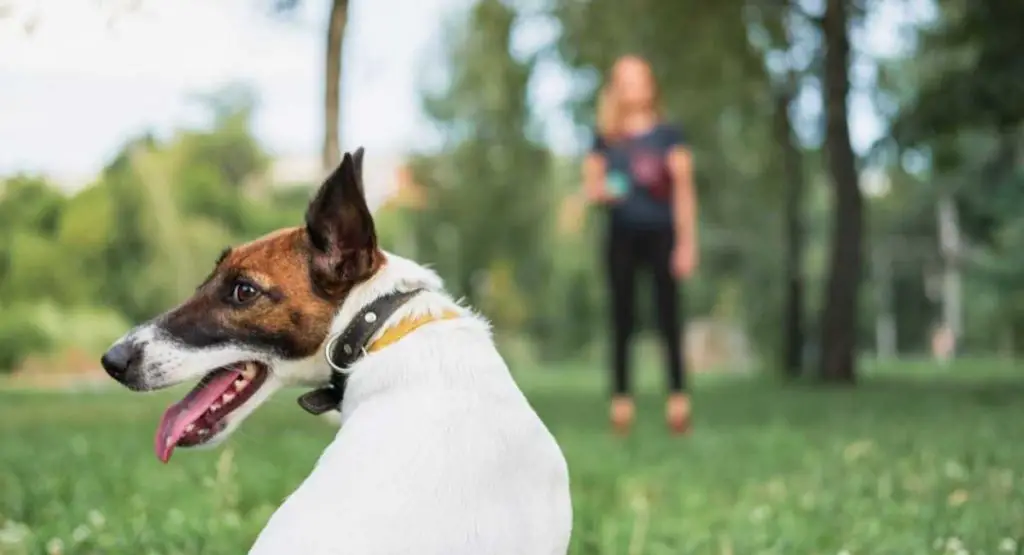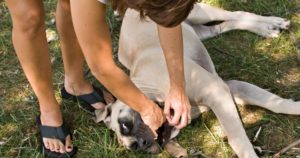Canine behavior experts stress the importance of having an obedient pet. Dogs that quickly lose focus and run wild with little attention to their owners’ commands can put themselves and others at risk. That’s why it’s generally recommended that puppies attend training classes that teach good animal behavior and instill automatic responses to situations.
Dog impulse control can also be something that pet owners struggle with, no matter the dog’s age. Dog training focus exercises can help establish target behavior, attention to commands, and the correct responses in various scenarios.
This can help make your life simpler by allowing you the freedom to walk your dog without a leash, feel confident that they won’t attack or bite strangers, and that they won’t jump up on people.
Below we look at the importance of dog obedience training and focus exercises to help with obedience.
Obedience Training for Dogs: Why It’s So Important
Many people take their dogs to behavior consultants to help overcome training challenges or achieve target behavior. Sometimes it’s to address aggressive behavior, instill a calm demeanor, ensure good behavior towards humans, or teach good pooch manners.
Many dog behavior books, dog training experts, and behavior management products can help your dog achieve calm behavior, address impulse control, and enhance obedience related to basic commands.
When you first get a puppy, most dog owners will attend pet training sessions or training classes to engrain obedience in your fur babies and help socialize your pet.
The reason why it’s so important to have an obedient dog is because you want to be able to walk your dog off-leash without worrying they’ll run off and never come back. You also want to trust your dog around strangers and children and know that if you give a command, they will listen.
Some dogs have issues with aggression or barking, and you also want to ensure that your dog will react to your commands and not be distracted by external stimuli.
It’s not only essential for your dog’s well-being and safety that they are taught to be obedient, but also to safeguard other people and dogs.
Is Your Dog Easily Distracted?
You may have noticed that your dog lacks basic impulse control, or that they struggle to focus despite having practiced various dog training focus exercises. There are many ways a dog can display signs that they are easily distracted. Distractions can be caused by noises, people, busy places, or even delicious food.

If your dog’s lack of focused attention is causing problems, you may want to consult a dog behavioral expert or trainer to help assess your dog, find the root of the problem, and help with training.
5 Dog Training Focus Exercises
Basic obedience training is premised on the fact that you want your dog to listen to your commands, have focused attention around distractions, and not display any aggressive behavior towards other dogs or humans.
Some people also like to enroll in dog shows and dog obedience contests. In this case, you may need advanced obedience training to teach your pooch intricate leash skills and reading of body cues.
Whatever the reason for wanting to ensure obedience, there are many dog training focus exercises that can help you, many of which you can practice at home without needing a behavioral expert. Below we look at five popular ways that you can help your dog better focus their attention through training exercises and games.
Call Your Dog’s Name Using a Positive Tone
It’s important to use a different tone of voice when praising your dog versus scolding your dog. That way, your dog won’t always associate their name with you being upset with them, which will make them more willing to cooperate when you positively call them.
To teach your dog to associate their name being called positively, get a special treat ready that you know they will enjoy. Next, command your dog to sit in front of you and show them the treat while you call them by name in a positive tone of voice. When your dog is focused on you, verbally praise your dog and give them a treat. You could also use a clicker if you prefer.
If your dog is too distracted to look at you, you might have to make some sweet noises to encourage them to look your way while also saying their name.
Practice this a few times and then repeat it once more during the day. This repetition will help your dog associate their name with food, which will help them pay attention and come when their name is called in the future. Even when a dog is distracted, it should be able to come when its name is called.
Play Obedience Games With Your Dog
To reinforce obedience by playing a little game, hold two doggies treats – one in either hand. Ask your dog to sit in front of you. Try to drop the leash, so they have to pay attention independently. If your dog is likely to run away, then you might need to stand on the leash to stop that from happening.
Your dog may attempt to take the treats from your hands, but resist until they look at you. Once that happens, say their name and give them the treat from one of your hands. Wait until the dog looks at you once more, then say their name and give the treat from the other hand.
Repeat this a few times and alternate hands to turn it into a little game of obedience.
This helps teach the dog to focus their attention on you, even when you aren’t telling them verbally what to do. It also reinforces their name being called as a positive association, which means they’ll be more likely to respond to it in the future.
You can increase the difficulty level of this game by forcing your dog to focus on you for a few extra seconds before giving them their yummy treat, or by waiting a few extra seconds after you say their name to hand over the treat. This teaches them to wait and be patient. Over time, you should notice how you can extend these waiting times quite significantly.
Keep Their Attention Focused on You Even When You Move Away
Once your dog has mastered the game above and can look at you while sitting patiently, then it’s time to add another layer of complexity to the game.
You should now walk sideways from your dog and ask your dog to look at you. If your dog follows you with their gaze, then reward your dog. If not, walk towards where your dog is looking and then wait for them to come to you before rewarding them.
Reinforce Focused Attention in a Distracting Environment
Now that your dog should be familiar with focusing on you when you call their name, it’s time to take them to a distracting environment to instill the same principle. You could take them for a walk around your street or to a park where other dogs and people may be distracting.
Practice the skills above in that distracting and busy environment by asking your dog to sit facing you, and when you call their name, they should look at you and wait for their treat. Now try to walk backwards while still holding the leash and ask your dog to keep looking at you. If your dog does that, then repeat their name and give them some love.
Practice Focus Even at a Distance
Another way to practice extended focus is to repeat the first game where you ask your dog to sit and wait before being rewarded. But this time, ask your dog to stay while you walk away, all the while watching you.
Then, teach your dog to heel on your command, which will indicate to your dog that you want them to run to you. Reward your dog for their good listening skills and for practicing their dog training focus exercises.
Final Thoughts on Coaching Good Pet Behaviors
Canine behavior is complex, and obedience training and dealing with a lack of focus can also be complicated. However, simple exercises can help you establish control through dog training focus exercises to help you achieve a calm response and focused attention to commands. This will ultimately lead to better obedience.
There are many dog behavior books and resources you can use to help build focus, but you may need to consult a dog behavioral specialist or veterinarian, depending on the severity of the issue.
There are many reasons why dogs can be (or become) disobedient, whether they struggle to pay attention with distraction (especially in a busier location) or whether it’s because they have too much pent-up energy from not being exercised regularly.
Pinpointing the exact cause of the lack of focus and then using training exercises to instill better focus can be life-changing for both fur friends and their owners.






